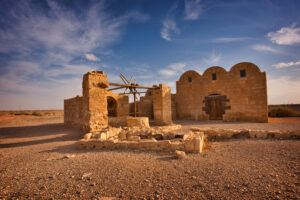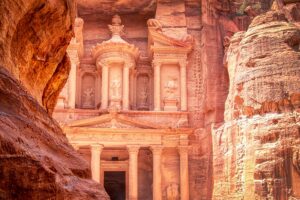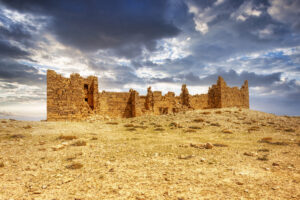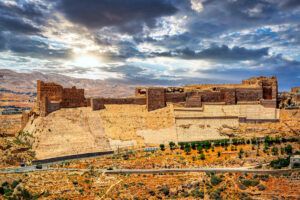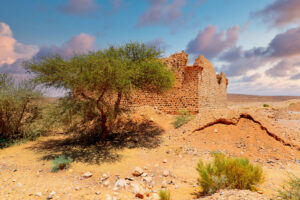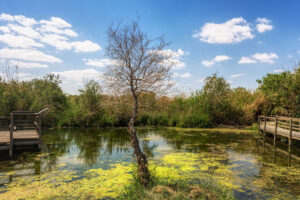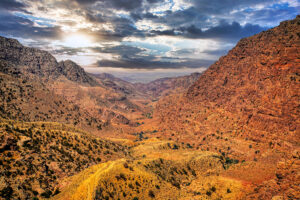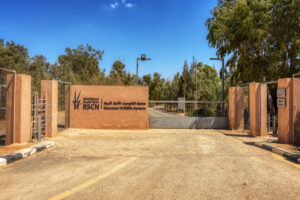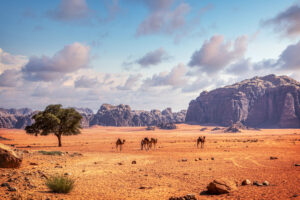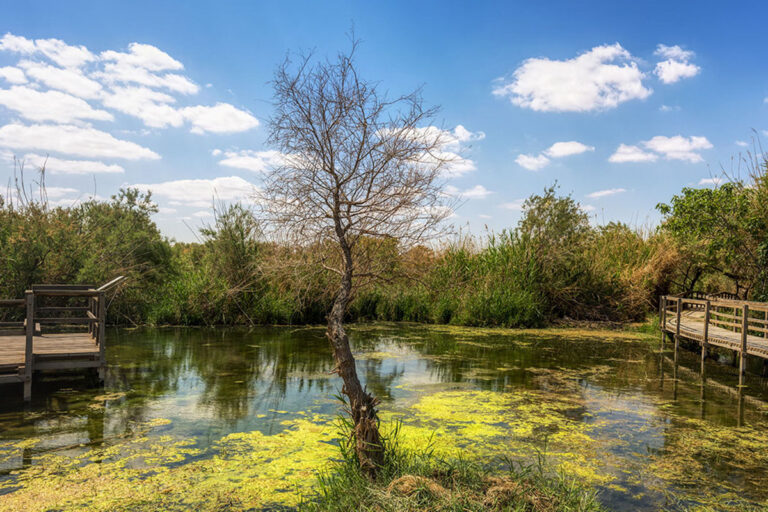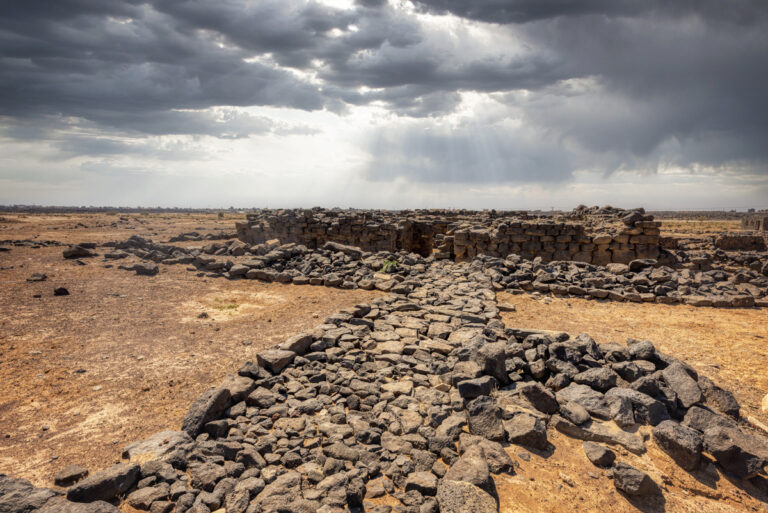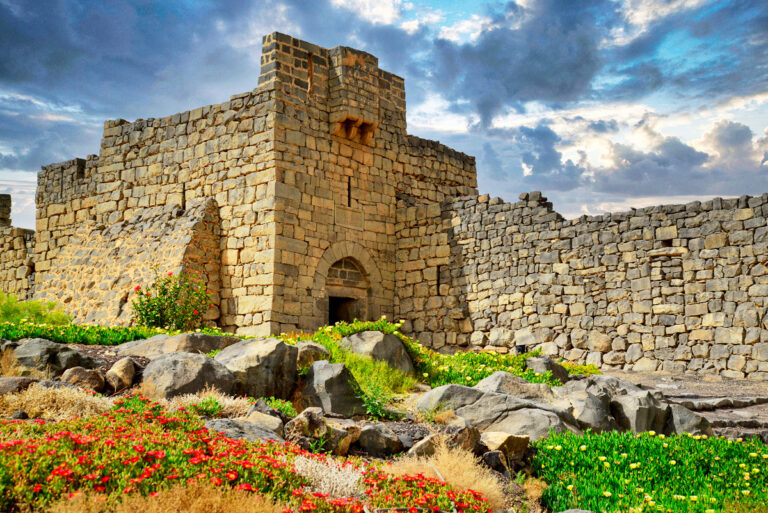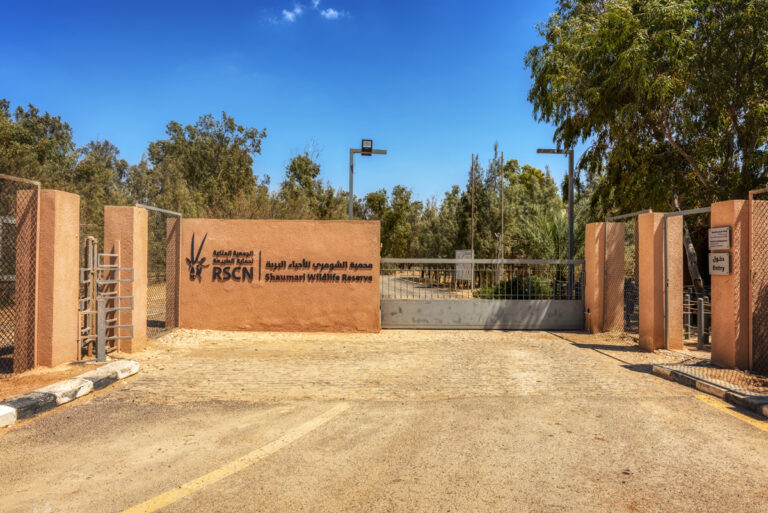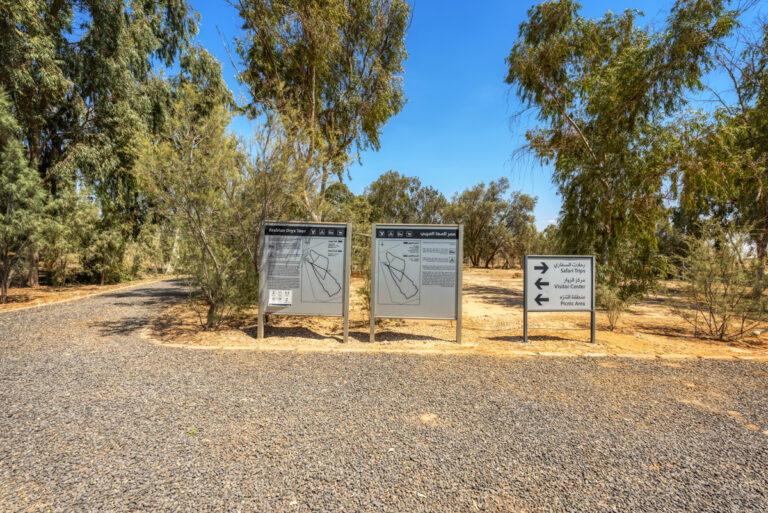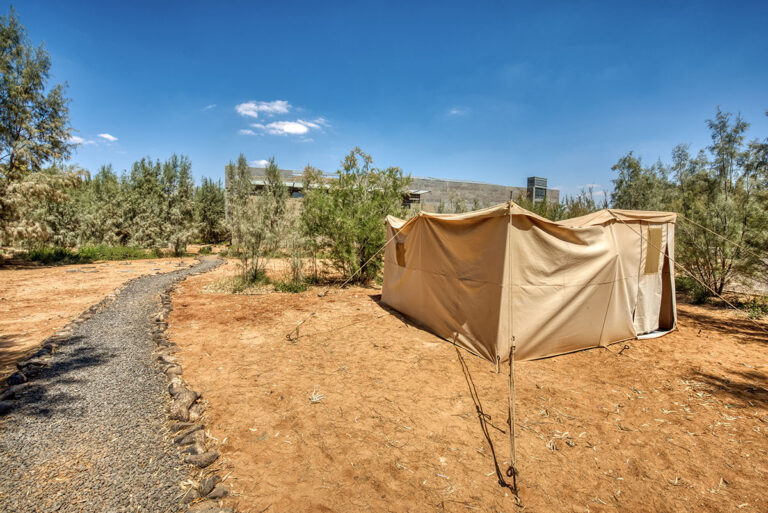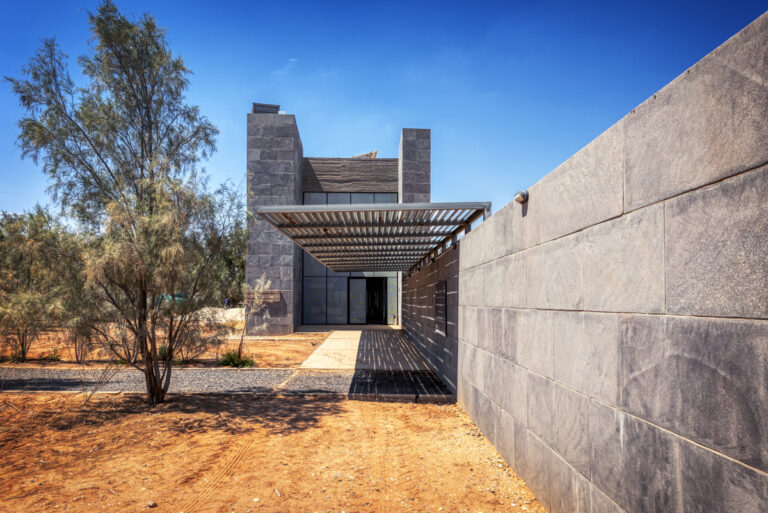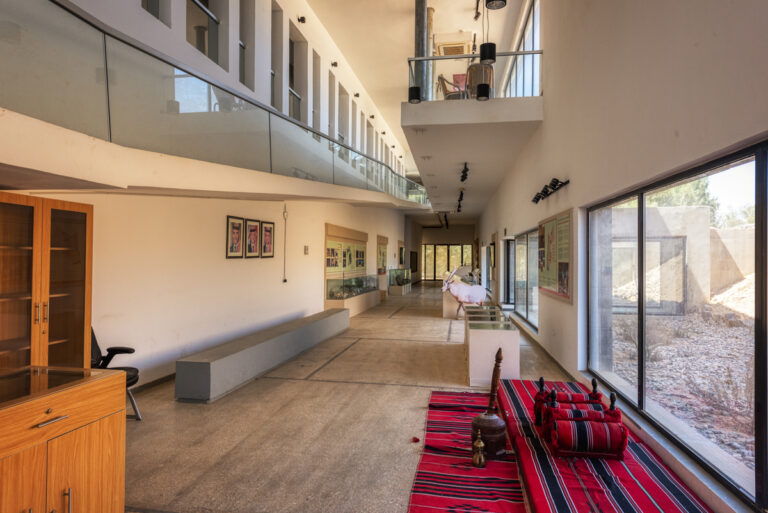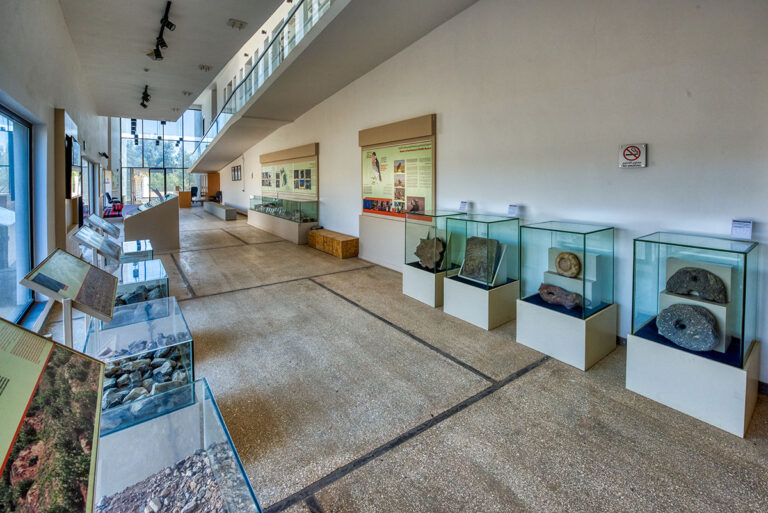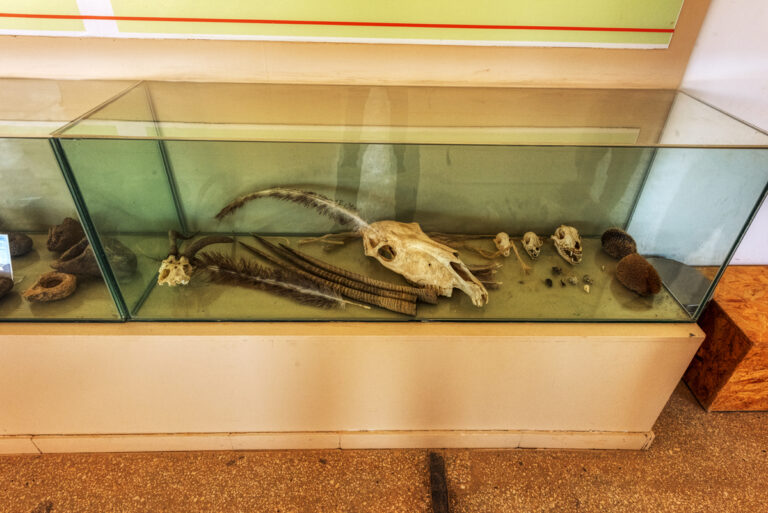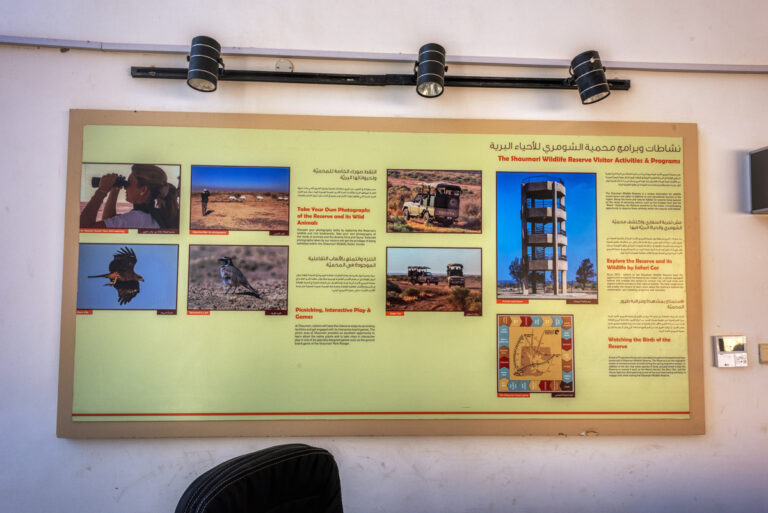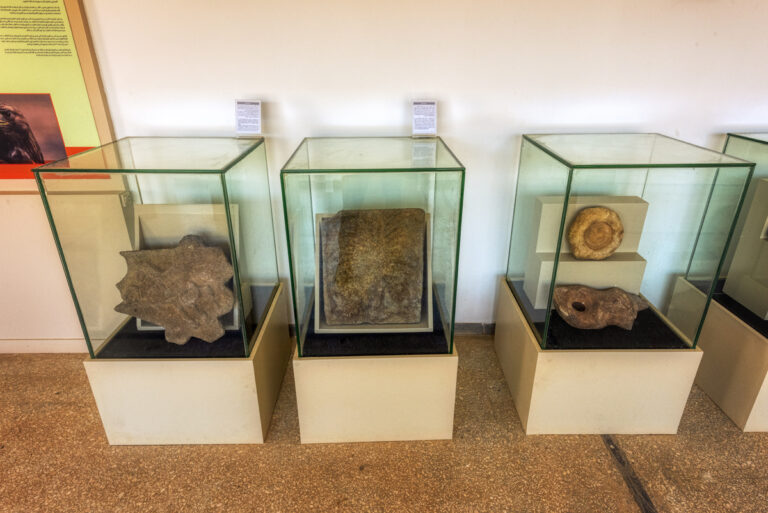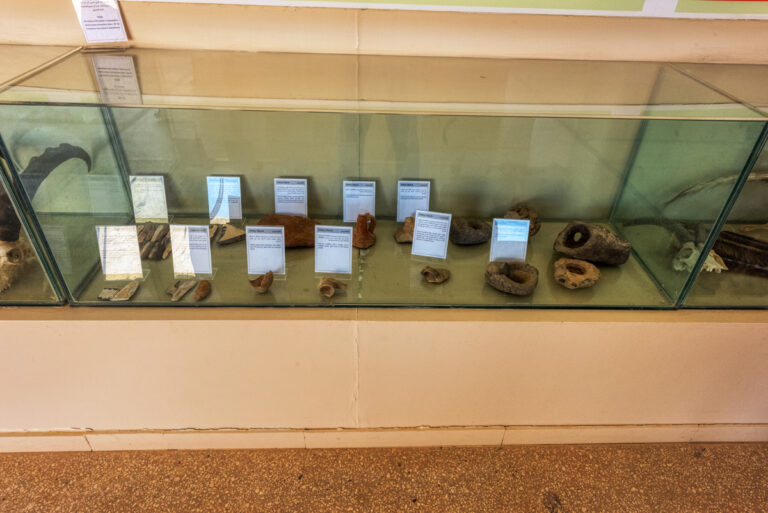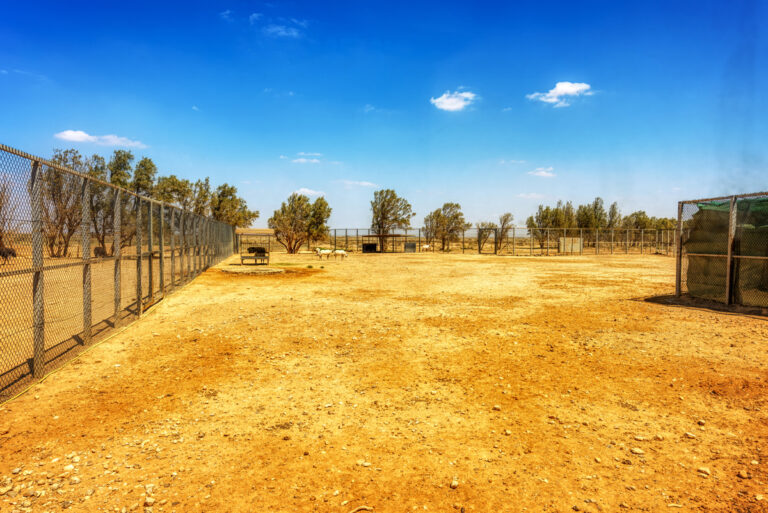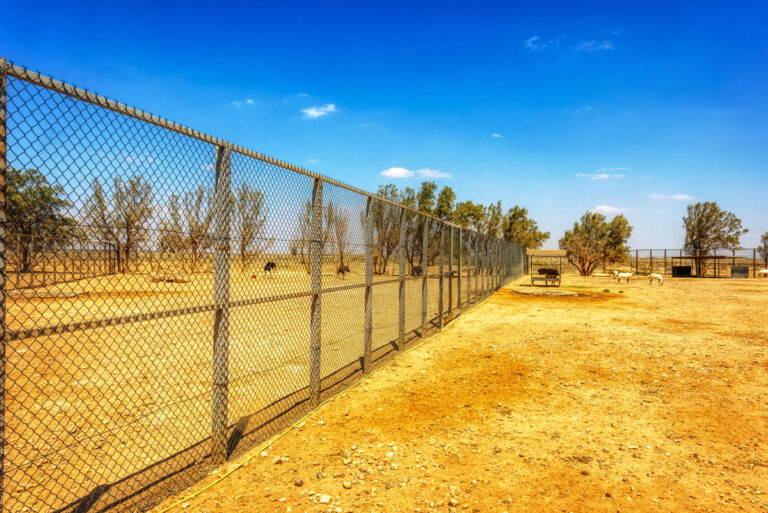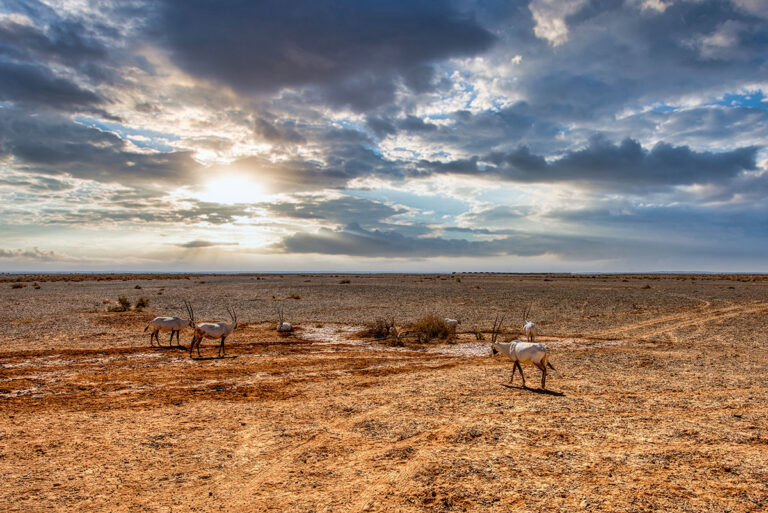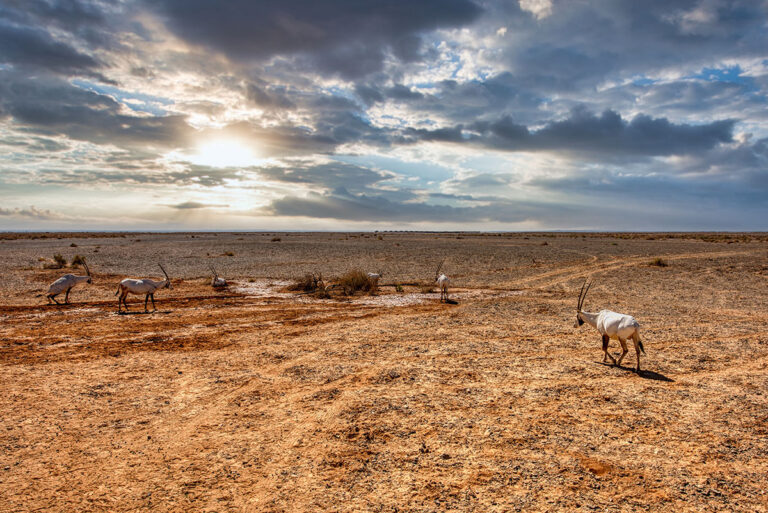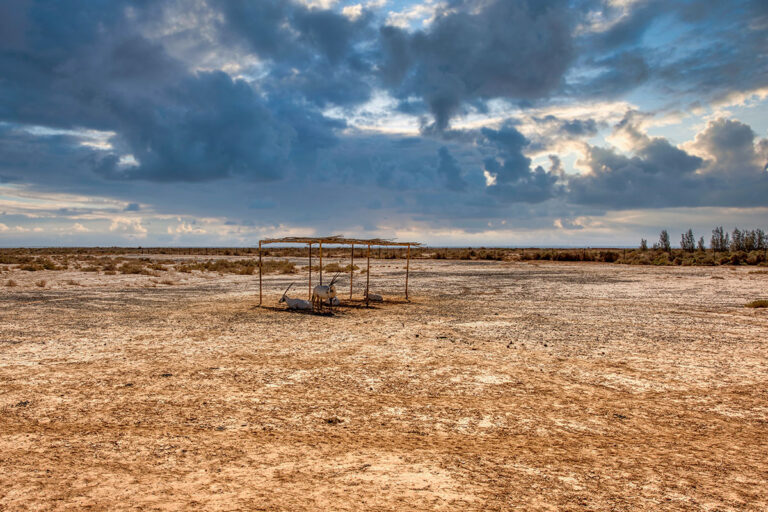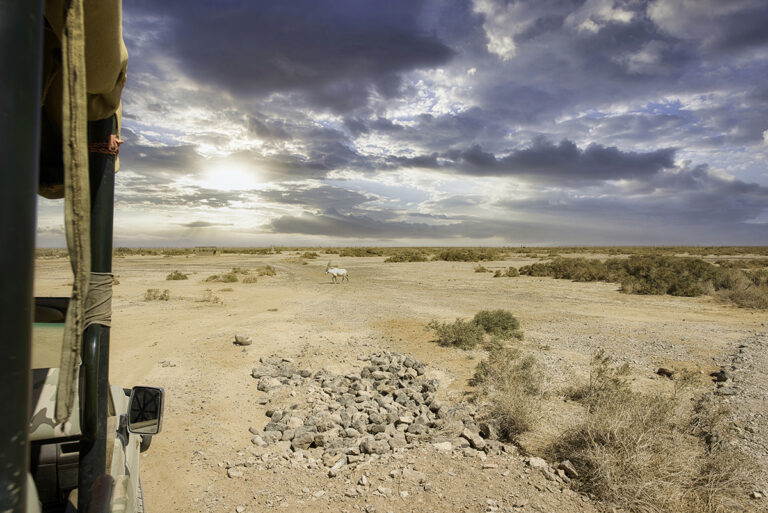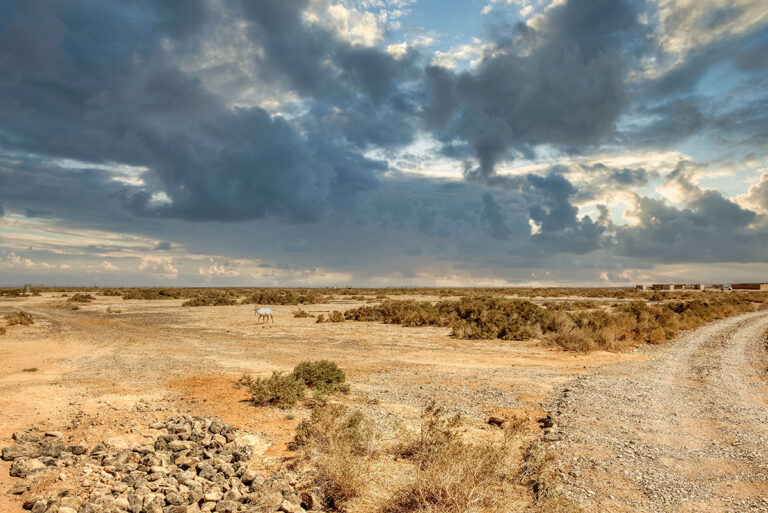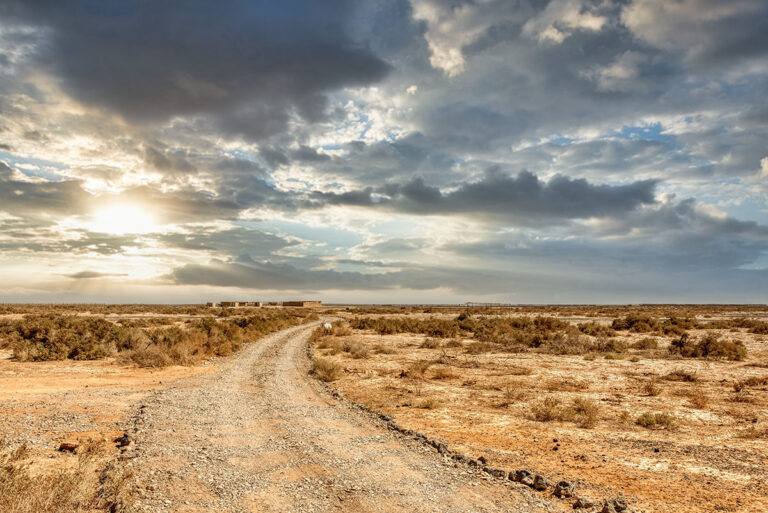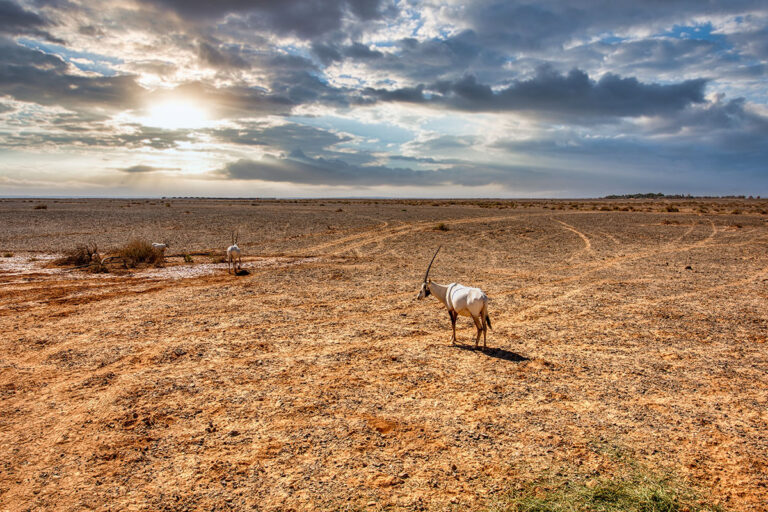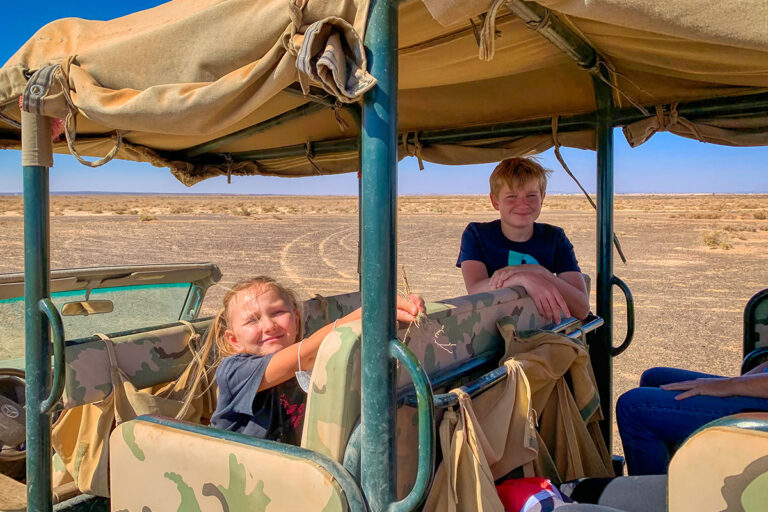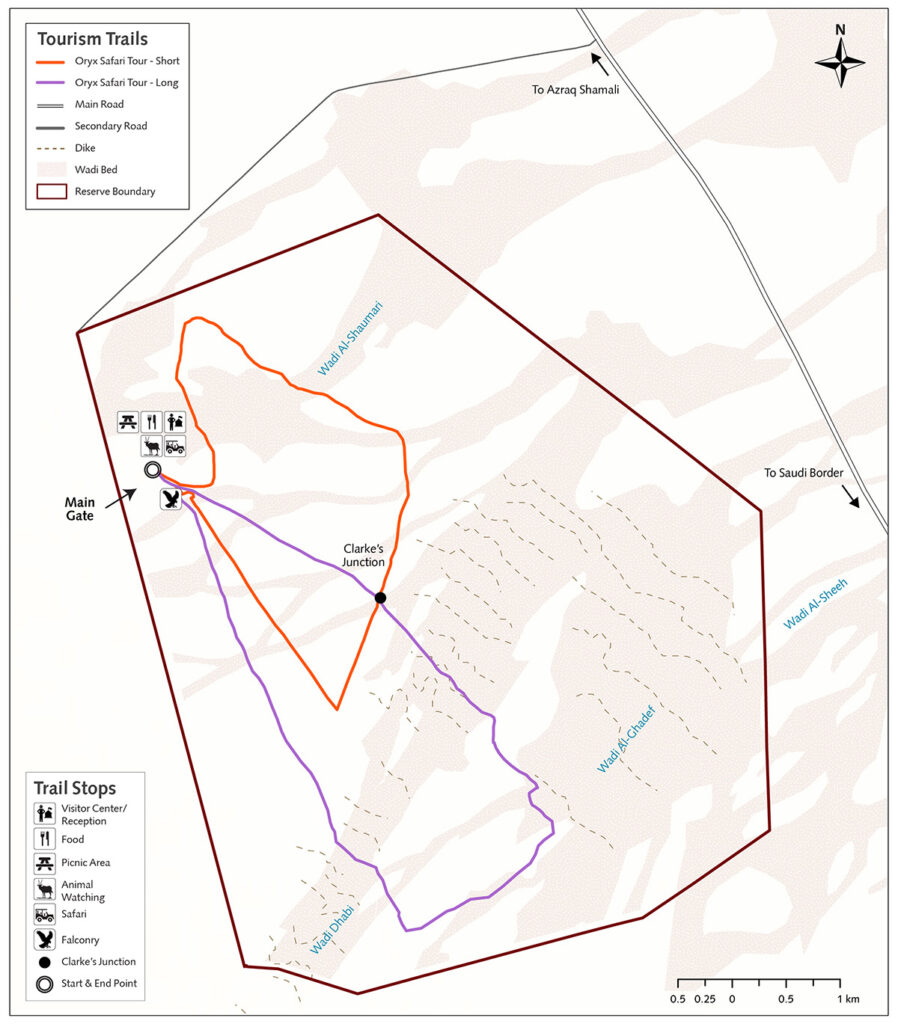Nestled in the heart of Jordan’s Eastern Desert, the Shaumari Wildlife Reserve stands as a testament to conservation and biodiversity. For wildlife and nature lovers, this reserve offers a unique experience blending ecological preservation with extraordinary wildlife encounters.
The reserve is located in Jordan’s Eastern Desert, about 7km from the Azraq T-junction on the road towards the Saudi border. Visiting Shaumari offers a convenient opportunity to explore nearby attractions like the Azraq Wetland Reserve and historic desert castles, including Qasr Azraq and Qusayr Amra—a UNESCO World Heritage Site.
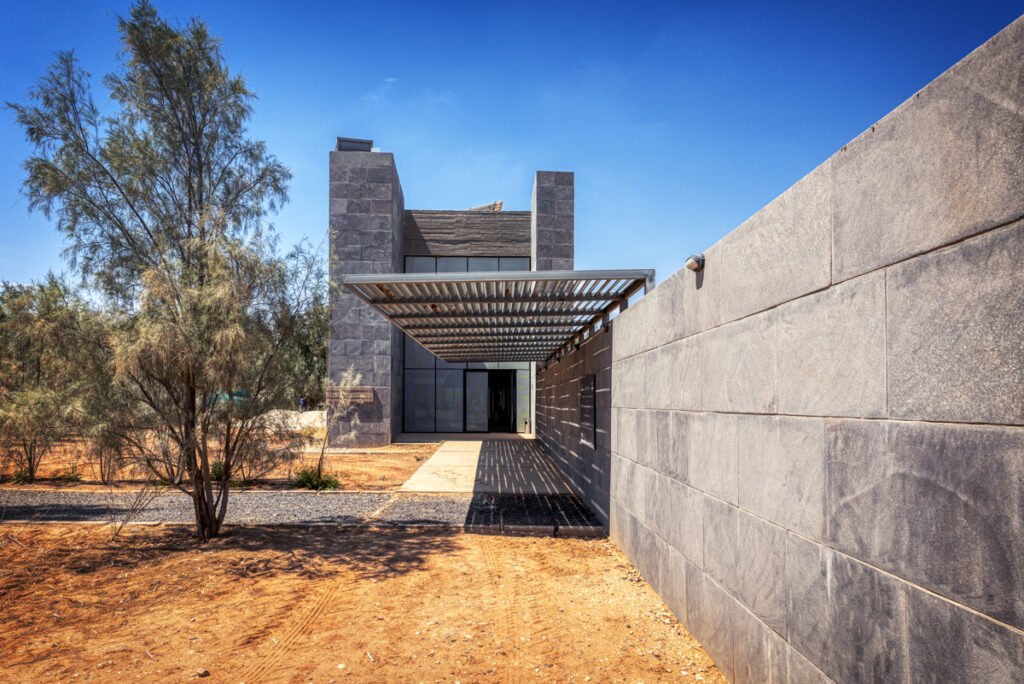
History and Mission
The Shaumari Wildlife Reserve was established in 1975 by the Royal Society for the Conservation of Nature (RSCN), making it Jordan’s first protected wildlife reserve. Spanning 22 square kilometres, the reserve was initially created as a safe haven for reintroducing wildlife indigenous to the region, particularly species on the brink of extinction.
Shaumari’s primary mission is to bring back endangered and locally extinct species to their natural habitats. Successfully combining international expertise with local action, the reserve has become a model of conservation in arid and semi-arid environments.
The Reserve’s Unique Landscape and Ecosystem
Shaumari offers diverse geographical features and an incredible range of flora. The landscape is mostly composed of desert wadis (dry riverbeds), covering 60% of the area, and hamad terrain (rocky desert), making up 35%. Wadi Shaumari, a prominent desert wadi running through the reserve, lends its name to this rich ecological sanctuary.
The reserve is home to 193 recorded plant species, many of which are essential to maintaining the delicate desert ecosystem. Common plants include wormwood, chamomile, halfa grass, and wild thyme. Beyond beautifying the stark desert, this flora supports a wide range of fauna and provides a living laboratory for research on arid land conservation.
Wildlife of Shaumari
The Shaumari Wildlife Reserve is home to some of the most endangered species in the Middle East. One of its founding missions was to re-establish populations of the Arabian oryx, a species that had gone extinct in the wild due to overhunting.
Iconic Species to Spot
- Arabian Oryx: These graceful, white-coated antelope were reintroduced in the 1970s, making Shaumari famous as a conservation success story. Today, you can often see them roaming the desert or visit the dedicated breeding enclosures.
- Persian Onagers (Wild Ass): Elusive and endangered, these wild donkeys are notoriously shy but can occasionally be spotted using supplied binoculars.
- Dorcas Gazelles and Houbara Bustards also thrive here, thanks to careful management.
Predators and Birdlife
The reserve also supports a range of predators, including:
- Red Fox
- Striped Hyena
- Wild Cat
- Wolf
For birdwatchers, Shaumari offers thrilling encounters. Spot majestic species like eagles, buzzards, and the endangered Egyptian vulture soaring overhead.
How to Experience Shaumari Wildlife Reserve
The reserve offers exceptional activities designed to immerse visitors in its natural beauty. Here are the highlights:
Modern Visitor Centre
Begin your visit at the state-of-the-art visitor centre, where you’ll learn about the reserve’s ecosystems and its impressive history of species conservation. The centre also offers insights into the biology and behaviours of resident animals.
Safari Adventures
Hop into a specially outfitted safari jeep to explore the reserve. Guided by knowledgeable experts, these safaris cost JD18 for a shot trail (up to 1 hour) and JD22 for a long trail (up to 2 hours) and allow you to get up close with the animals in their enclosures and natural habitats. Don’t forget your binoculars—spotting Persian onagers in the wild is a challenging but rewarding experience!
Oryx Biking Tour
The Arabian Oryx Biking Trail (guided only) offers an exciting opportunity to get close to the Arabian Oryx at the Shaumari Wildlife Reserve. The biking tour begins with a brief introduction outlining what to expect on your journey through the desert. As you approach these endangered animals, you will learn the basics of animal tracking and practice reading tracks. Your guide will also provide an overview of the reserve’s vegetation, highlighting various native plants and herbs along with their uses.
Shaumari Valley Hike
The circular trail begins at the Visitor Center and leads you past the picnic area and children’s play areas. As you approach the entrance gate to the Wadi, a tour guide from the RSCN will take a few moments to introduce you to the reserve and what to expect along the trail.
As you reach the fenced enclosure, the long antlers of the White Arabian Oryx will immediately catch your attention. Continuing along the trail, you’ll notice small birds chirping nearby. After a brief stop at the Rehabilitation Unit for Confiscated Animals, your journey concludes back at the Visitor Center, where it all began.
Other Activities
- Visit the oryx breeding grounds, often bustling with calves in the spring.
- Explore the aviary near the entrance, which houses falcons rescued from illegal hunters. Once rehabilitated, these raptors are returned to the wild.
- Take part in learning opportunities tailored for students and children, making the reserve an ideal destination for families.
Conservation Efforts at Shaumari
Shaumari represents a global effort to preserve species on the verge of extinction.
- Arabian Oryx Rescue Program: Starting in the 1970s, with just 8 oryx flown in from the United States and 3 donated by Qatar, Shaumari spearheaded their reintroduction to the wild. By 1983, the population had grown to the extent that 31 oryx were released into natural desert enclosures.
- Future Plans: The reserve also aims to reintroduce ostriches, a species previously native to the region but hunted to extinction.
Through these efforts, Shaumari has become a beacon of hope for biodiversity conservation in Jordan and beyond.
How to Get There
Shaumari Wildlife Reserve is easy to access with clear signage. Simply follow the road leading to the Saudi border from Azraq, and turn at the well-marked point about 7km from the T-junction.
Pro Tip: Combine your visit with a trip to the nearby Azraq Wetland Reserve for a full day of exploration.
Why Visit Shaumari Wildlife Reserve?
From seeing Arabian oryx roaming free to learning about cutting-edge conservation efforts, the Shaumari Wildlife Reserve is a must-visit for wildlife enthusiasts exploring Jordan. Maximise your experience by booking a safari adventure or chatting with local guides who bring the reserve’s stories to life.
Through eco-tourism, Shaumari brings people into a closer connection with the natural world. By visiting, you’ll directly support conservation efforts and get a rare glimpse into Jordan’s stunning biodiversity.

Key Moments in History
1975 - Establishment
Shaumari Wildlife Reserve was founded by the Royal Society for the Conservation of Nature (RSCN), becoming Jordan's first protected area.
1978 - Arabian Oryx Reintroduction Program
The reserve launched a groundbreaking effort to reintroduce the Arabian oryx, a species declared extinct in the wild.
Key Moments in History
1975 - Establishment
Shaumari Wildlife Reserve was founded by the Royal Society for the Conservation of Nature (RSCN), becoming Jordan's first protected area.
1978 - Arabian Oryx Reintroduction Program
The reserve launched a groundbreaking effort to reintroduce the Arabian oryx, a species declared extinct in the wild.
1980s - Success in Conservation Efforts
The Arabian oryx population began to thrive, establishing the reserve as a global success story in wildlife conservation.
Expansion of Biodiversity Efforts
Other endangered species like gazelles and wild donkeys (onagers) were introduced to the reserve, showcasing its broader role in ecosystem restoration.
Development of Environmental Education and Ecotourism
The reserve became a hub for educating visitors about wildlife conservation and promoting ecotourism, fostering a deeper connection to nature.
Continued Advocacy for Conservation
Shaumari remains a leader in regional and global efforts to protect endangered species, cementing its role as a model for effective wildlife preservation.
